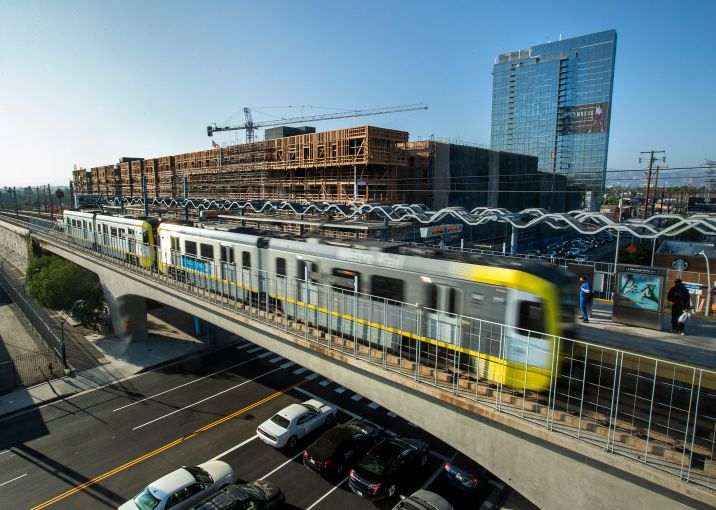LA’s Expo Line Density Plan Survives Lawsuit
Plan calls for taller buildings to allow for 6,000 new apartments and condos and 14,000 jobs along the E Line
By Greg Cornfield December 28, 2021 7:35 pm
reprints
A Los Angeles Superior Court has ruled in favor of the city’s plan to allow taller offices and apartment buildings along the Metro Expo Line on the Westside.
The Exposition Corridor Transit Neighborhood Plan (Expo Plan) approved in 2018 aims to accommodate the construction of about 6,000 new multifamily and condominium units, and 14,000 jobs, within a half mile of five Expo Line stations. (It’s now named the E Line, but still more commonly known as Expo Line.)
A nonprofit organization called Fix the City filed a lawsuit to overturn that plan, arguing the city’s infrastructure can’t handle the increased density. But the court’s decision rejected those arguments.
“We urgently need more housing and we should put it close to public transit to reduce traffic congestion,” City Attorney Mike Feuer said in a statement. “This victory is an essential step in dramatically reimagining how Angelenos live, work, shop and play. L.A.’s future is closely tied to creating more transit-oriented development as we tackle our housing crisis and L.A.’s crushing traffic congestion.”
Laura Lake, a member of Fix the City, told Commercial Observer that the advocacy group will appeal the court’s decision, but declined to comment further until after the New Year.
The group’s lawsuit claims that the city infrastructure on the Westside is inadequate and unable to support the proposed increase in housing along the transit corridor, and says the city was required to assess the stability before approving the plan. The group argues the street conditions in West L.A. are “far from adequate” and that public safety is compromised due to increased police and fire department response times.
Fix the City’s lawsuit argues that L.A. “willfully ignored its own mandatory policies,” created to provide for adequate infrastructure, and that city officials “kicked the infrastructure can down the road — and right into a pothole.”
However, the court found the city provisions that guide development do not use language mandating a finding of adequate infrastructure before an action increasing allowed density may be adopted.
The second phase of the Expo Line was completed in 2016, extending approximately six miles from Culver City to Santa Monica. The goal of the Expo Plan was “to plan for development around the Phase 2 stations in the city of Los Angeles” in order to “promote transit ridership [and] reduce automobile dependence.”
Gregory Cornfield can be reached at gcornfield@commercialobserver.com.


